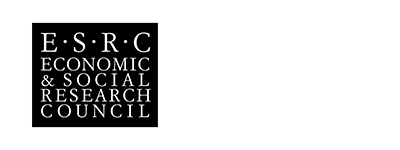Today we have a guest news piece written by Judith Potts, Founder of the Charles Bonnet Syndrome campaign, Esme's Umbrella, and columnist for the Telegraph.
Sensing Nature is exploring how natural environments feature in the lives of people living with low vision or sight loss. One of the most common – but best kept – secrets about adjusting to loss of vision is the appearance of a condition called Charles Bonnet Syndrome (CBS).
Rather appropriately for Sensing Nature, CBS was first identified by a naturalist as long ago as 1760. Charles Bonnet observed that his 87-year old grandfather, whose sight was impaired by cataracts, was seeing a range of complex visual hallucinations which were not a result of a mental illness.
Today, for my CBS Awareness Campaign – Esme’s Umbrella – I speak to hundreds of people, living with this condition, who ring my Helpline (0345 051 3925 answered 24/7 365) or email me on esmesumbrella@gmail.com
I am collecting data on what people see – and the list is extraordinary and endless. My Mother, Esme, saw faceless people sitting on her sofa, a gargoyle-like creature which hopped from table to chair and a tear-stained Victorian street child who followed her everywhere.
For others, nature features heavily. From benign images of beautiful flowers, tall trees, rabbits, cats or a sparkling lake to more disturbing sights of fierce tigers, tarantulas, snakes, soldiers or fire. Sometimes the whole room morphs into a totally different scene – one man told me that he suddenly found himself sitting on a pallet in the middle of a fast-flowing river. Terrifying for someone in their twenties - but he was 82.
We do not know why some people see pretty parts of our planet, while others are plagued by more sinister elements. Considering that three centuries have passed since Charles Bonnet noted his grandfather’s vivid, silent, visual hallucinations, it is shocking how little more is understood about the condition.
The little we do know has come from the research of Dr Dominic ffytche of King’s London, who is the sole globally-acknowledged expert in CBS. He explains that the brain – rather than quietening down when vision is lost and the messages from the retina dry up – fires up and creates its own images.
The despair and isolation that the condition can cause – partly due to ophthalmologists not warning their patients with low vision that CBS might develop and partly due to GPs and optometrists being unaware of CBS – is underestimated. Too many people are living with CBS in frightened silence, thinking it is the precursor to dementia. If there is no significant memory loss and no other mental health issue, then the hallucinations are caused by CBS.
My aim is to promote awareness of CBS within the medical profession and out into the community, plus raising money for vital research. Adjusting to life with sight loss is difficult enough but when CBS develops too, the quality of life takes a further nose-dive. The current situation cannot be allowed to continue – we need a proper pathway for diagnosis, treatment and support.
We have an official awareness day on 16th November and a Restricted Fund for donations under the auspices of Fight for Sight. The funds can only be used for research into Charles Bonnet Syndrome.
To donate please log on to www.justgiving.com/fundraising/esmesumbrella



